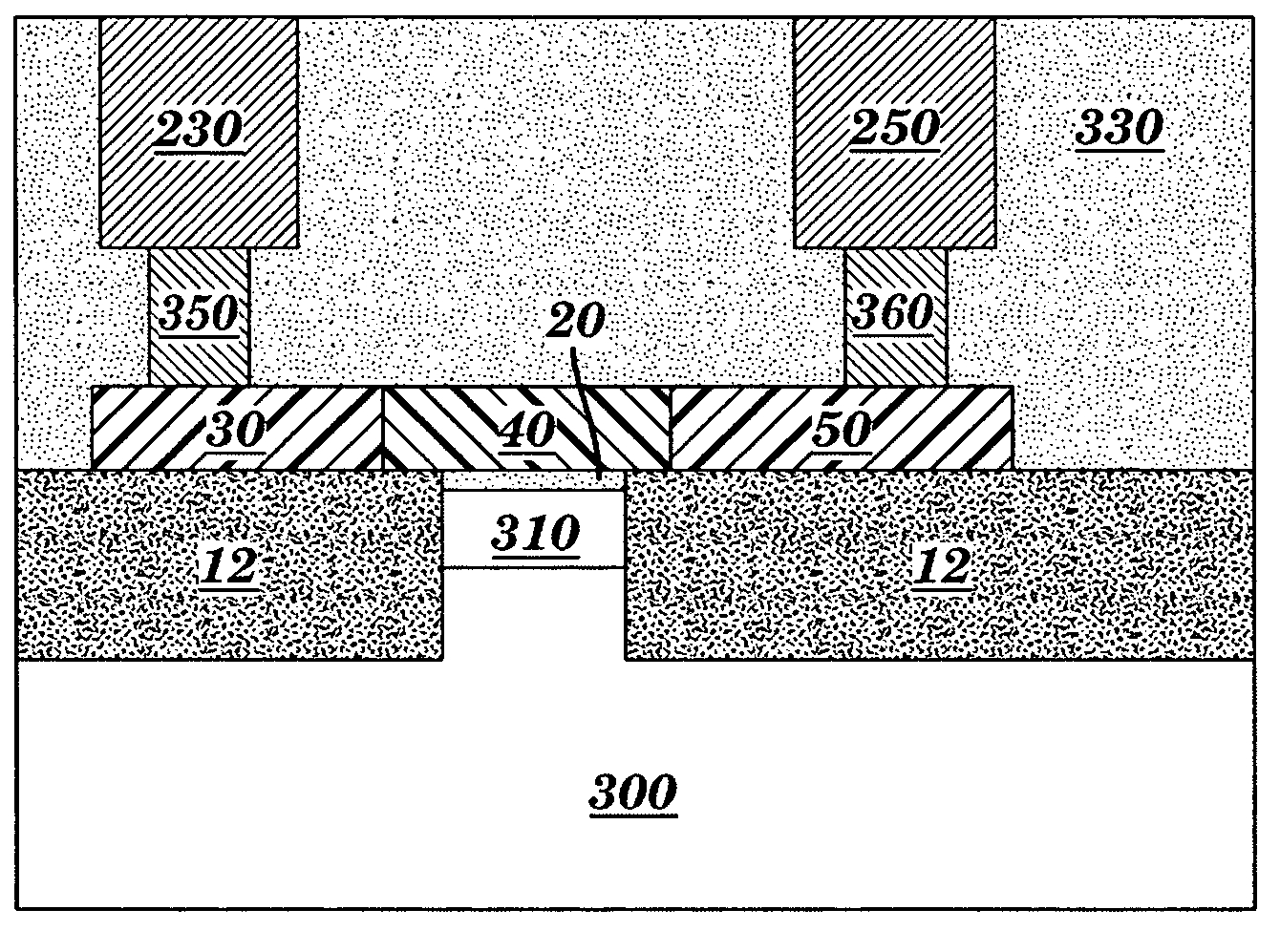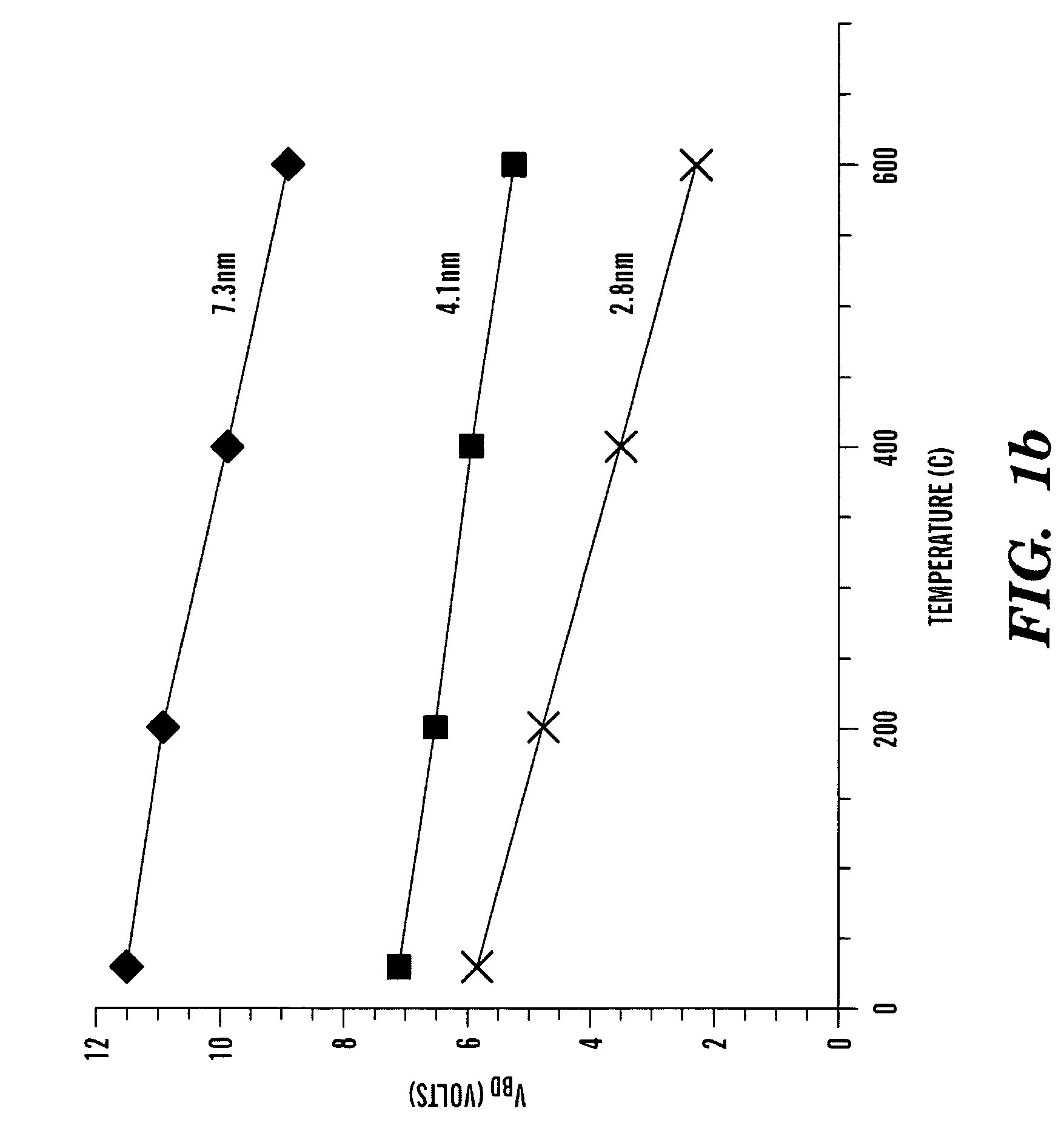Antifuse structure having an integrated heating element
a technology of heating element and antifuse, which is applied in the direction of semiconductor devices, semiconductor/solid-state device details, instruments, etc., can solve the problems of negative impact on the flow of production testing and repair of new chips, current and the required high voltage are close to integrated circuit design constraints, and no component of the antifuse itself is involved in the generation of heat, etc., to achieve the effect of direct heating of the dielectric layer
- Summary
- Abstract
- Description
- Claims
- Application Information
AI Technical Summary
Benefits of technology
Problems solved by technology
Method used
Image
Examples
first embodiment
[0033]FIG. 2a illustrates a partial top-down view of an antifuse structure according to the present invention. Programmable circuit 10 includes an isolation layer 12 formed on a semiconductor substrate (not shown) and an antifuse structure formed by a lower conductor (not shown), upper conductor 40, and the portion of dielectric layer 20 formed between the lower and upper conductors. Anode 30 and cathode 50 are formed adjacent an insulating layer (not shown) and formed on isolation layer 12. Anode 30 and cathode 50 source / sink current through the upper conductor 40. Upper conductor 40 is also formed adjacent the insulating layer and formed partially on isolation layer 12 and partially on dielectric layer 20. In one example, upper conductor 40 has a width of approximately 60 nm to 120 nm and a length of approximately 300 nm to 1200 nm. Upper conductor 40 can be formed from any suitable conductive material such as doped and undoped polysilicon, doped and undoped silicided polysilicon,...
second embodiment
[0048]FIG. 4a illustrates a partial top-down view of an antifuse structure according to the present invention. Programmable circuit 500 includes an isolation layer 512 formed on a semiconductor substrate (not shown) and an antifuse structure formed by a lower conductor (not shown), upper conductor 530, and the portion of dielectric layer 520 formed between the lower and upper conductors. Upper conductor 530 is formed adjacent an insulating layer (not shown) and formed partially on isolation layer 512 and partially on dielectric layer 520. Upper conductor 530 can be formed from any suitable conductive material such as doped and undoped polysilicon, doped and undoped silicided polysilicon, doped and undoped monocrystalline silicon, titanium nitride, tantalum nitride, metals including aluminum, copper and alloys thereof, and refractory metals including tungsten, titanium, tantalum and alloys thereof. Dielectric layer 520 is formed on the lower conductor and can be formed from any suita...
third embodiment
[0056]FIG. 5a illustrates a partial top-down view of an antifuse structure according to the present invention. Programmable circuit 800 includes an isolation layer 812 formed on a semiconductor substrate (not shown) and an antifuse structure formed by a lower conductor (not shown), upper conductor 840, and the portion of dielectric layer 820 formed between the lower and upper conductors. Anode 830 and cathode 850 are formed adjacent an insulating layer (not shown) and formed on isolation layer 812. Anode 830 and cathode 850 source / sink current through upper conductor 840. Upper conductor 840 is also formed adjacent the insulating layer and formed partially on isolation layer 812 and partially on dielectric layer 820. Upper conductor 840 can be formed from any suitable conductive material such as doped and undoped polysilicon, doped and undoped silicided polysilicon, doped and undoped monocrystalline silicon, titanium nitride, tantalum nitride, metals including aluminum, copper and a...
PUM
 Login to View More
Login to View More Abstract
Description
Claims
Application Information
 Login to View More
Login to View More - R&D
- Intellectual Property
- Life Sciences
- Materials
- Tech Scout
- Unparalleled Data Quality
- Higher Quality Content
- 60% Fewer Hallucinations
Browse by: Latest US Patents, China's latest patents, Technical Efficacy Thesaurus, Application Domain, Technology Topic, Popular Technical Reports.
© 2025 PatSnap. All rights reserved.Legal|Privacy policy|Modern Slavery Act Transparency Statement|Sitemap|About US| Contact US: help@patsnap.com



